#artist is tintoretto
Text

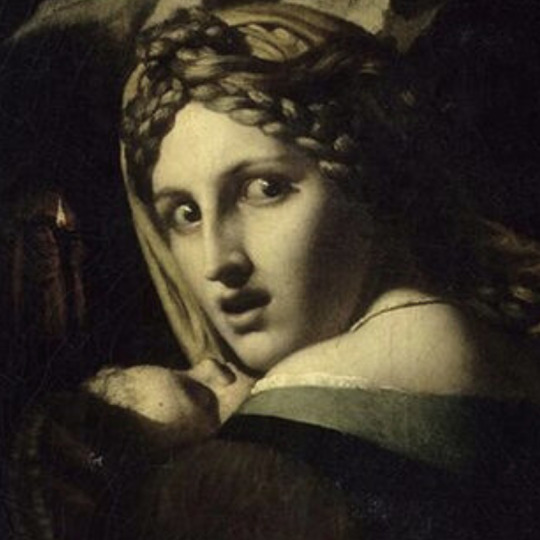
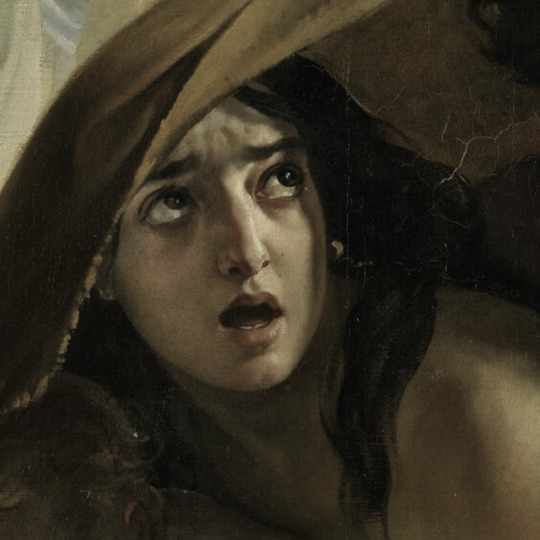
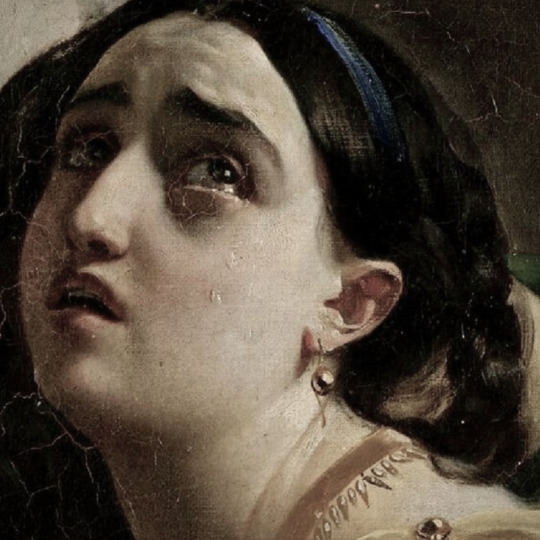

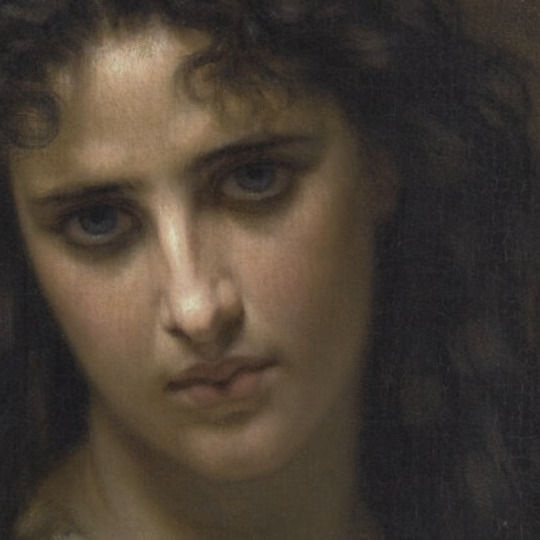




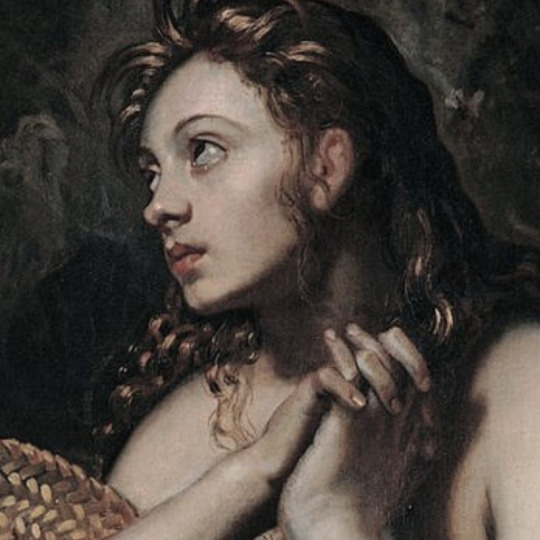



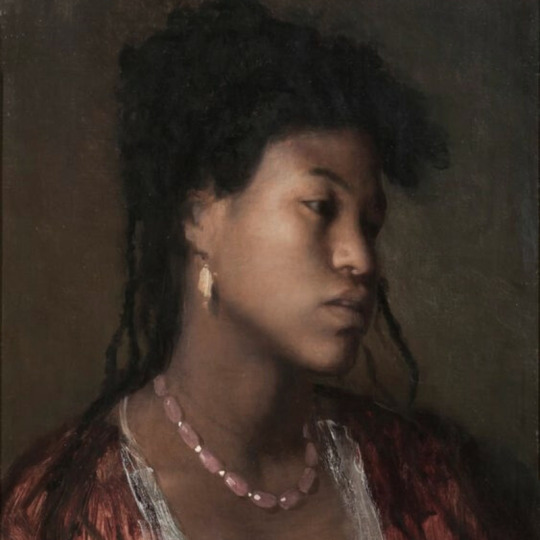
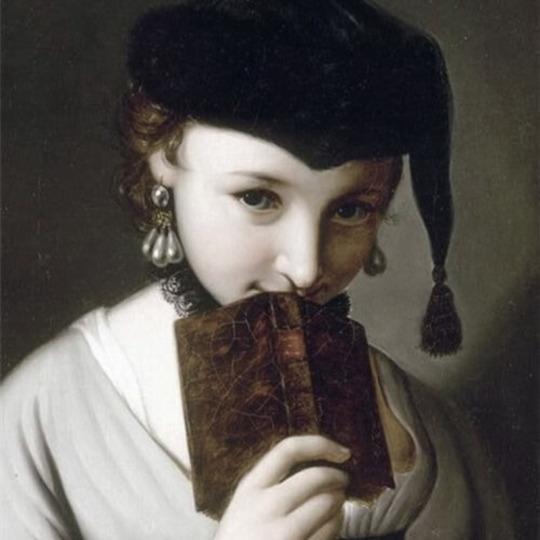
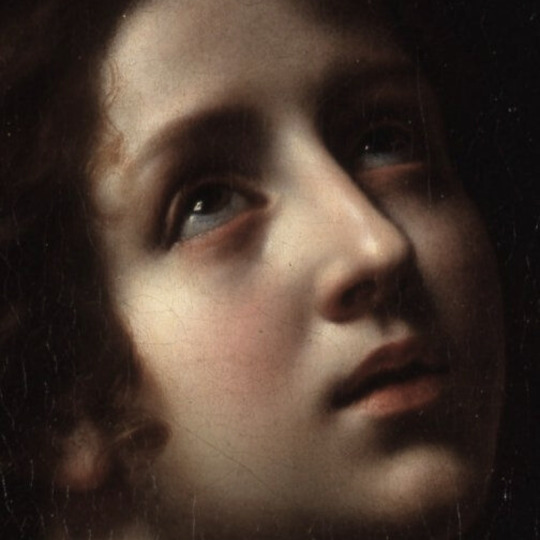
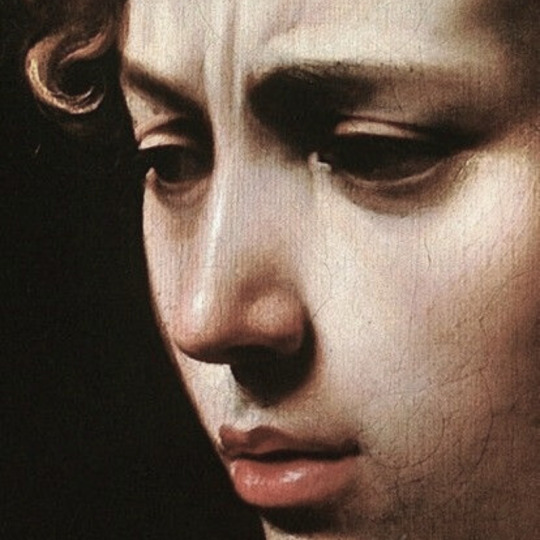
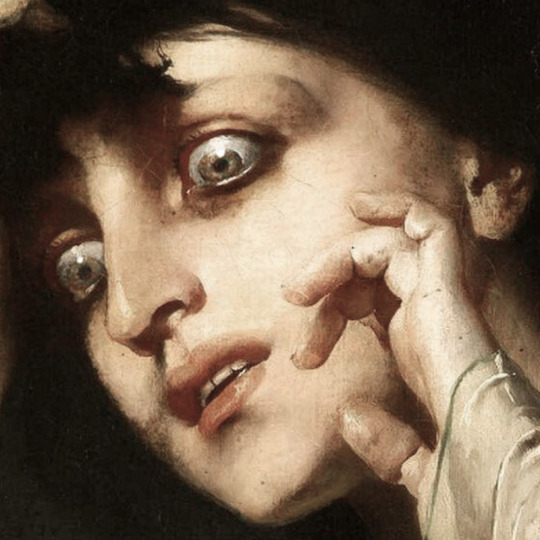

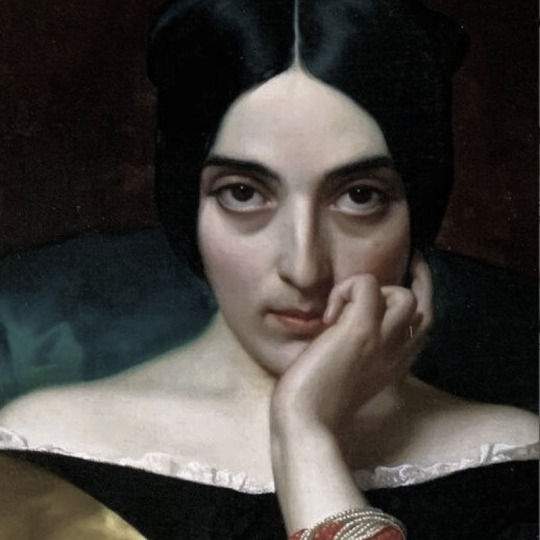
it's all in the eyes
#artist is hughes georges merle#artist is august wilhelm sievert#artist is karl brioullov#also by karl brioullov#artist is john everett#also by hughes merle#artist is ary scheffer#artist is paul hippolyte delaroche#artist is harold h piffard#artist is cesare saccaggi#artist is tintoretto#artist is frederick sandys#artist is sophie anderson#artist is unknown#artist is leopold carl muller#artist is pietro antonio rotari#artist is carlo dolci#artist is caravaggio#artist is jeno gyarfas#artist is jean-baptiste greuze#artist is henri lehmann#art history#art#artedit
3K notes
·
View notes
Photo
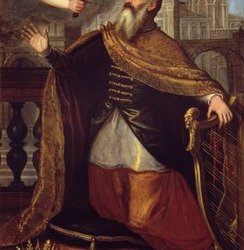
David von Domenico Robusti Tintoretto (Öl auf Holz)
#kunst#kunstwerk#art#artwork#domenico robusti tintoretto#künstler#artist#religion#religiöse kunst#religious art#david#engel#angel#krone#crown#schädel#skull#bibel#bible#glaube#faith#beten#pray#holy#heilig#gott#god#vater#father#christentum
9 notes
·
View notes
Text

Jacopo Comin, known as Tintoretto (Italian, 1518-1594) • Danaë • c. 1577 • Musée des Beaux-Arts, Lyon, France
Another beautiful depiction of Danae (and the shower of gold)
#art#painting#fine art#art history#tintoretto#italian artist#venetian school#italian renaissance#renaissance art#danae#danaë#mythological painting#greek mythology#art nude#dogs in artworks#art lover#art nerd#blogging art#pagan sphinx art blog
6 notes
·
View notes
Text

Tancred Baptizing Clorinda
Domenico Tintoretto
oil on canvas, ca. 1586-1600
#Domenico Tintoretto#art#artist#painter#painting#oil on canvas#Tancred Baptizing Clorinda#ca. 1586-1600
50 notes
·
View notes
Video
Jacopo Robusti, called Tintoretto, Madonna and Child, ca. 1570-1572, Oil on canvas, 11/23/22 #legionofhonor #artmuseum by Sharon Mollerus
#called Tintoretto#Oil on canvas#Legion of Honor Museum#ca. 1570-1572#Madonna and Child#San Francisco#artist#Jacopo Robusti#CA#flickr
11 notes
·
View notes
Photo

Keter (Torah Crowns) 1945 – Hyman Bloom
#Hyman bloom#Boston expressionism#the thing that always gets me is viewing artists' sketches. its your first impulse as an artist. traditionally they're not meant for#public consumption. they're artistic impulse in it's purest form. keeping a sketchbookis a dying art... and that's terrible#it instantly connects you to that artistic tradition... you become a part of history in a way. because artists sketch. you can feel close to#the thinkers who came before you– whether its Tintoretto Bloom Mondrian or Rockwell#just look at that smudge in the upper left corner... it's everything
6 notes
·
View notes
Text
Tintoretto is an artist who did not create for money


Tintoretto St Mary Magdalen.
Tintoretto - the great Italian artist of the XVI century, author of numerous paintings of the historical genre, one of the greatest representatives of the Venetian school of painting. His real name is Jacopo Robusti, and the outstanding genius of art received the nickname Tintoretto (from Italian - "little dyer") as a child by the profession of his father - a dyer of fabrics.
Read the full article
0 notes
Text
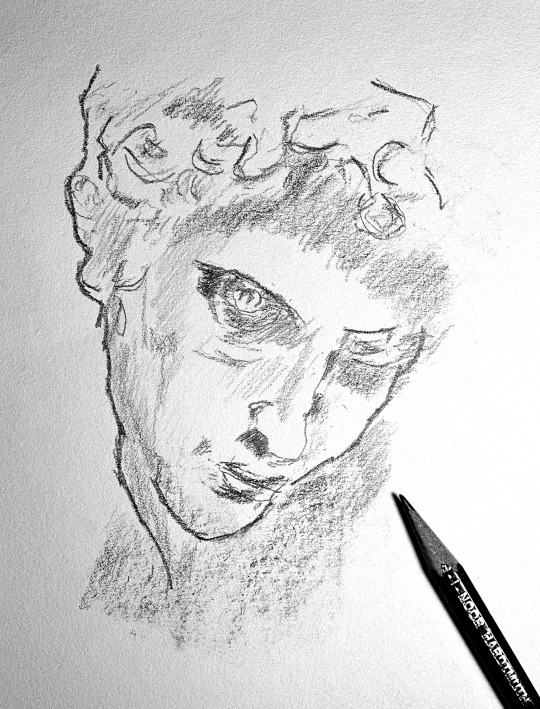
Giuliano de Medici's head, after a sketch of master Jacopo Robusti (Tintoretto) on an impression by Michelangelo (the great master himself!)
#sketch#drawing#tintoretto#michelangelo#medicis#firenze#artitaly#art#sketchbook#artistsoninstagram#artist#creative#illustrator#draw#illustration#fanart#artoftheday#arte#artwork#sketching#inktober#instaart#drawings#anime#watercolor#pencildrawing#painting#design#digitalart#portrait
0 notes
Text
Rewind the Tape —Episode 2
Art of the episode
Just like we did for the pilot, we took note of the art shown and mentioned in the second episode while we rewatched it, and we are sharing our findings with you. Did we miss any? Can you help us put a name to the unidentified ones? Do you have any thoughts about how these references could be interpreted?

Unnamed painting by Marius de Romanus
Created for the show (uncredited artist).
Armand (still "Rashid") tells Daniel that Marius was a contemporary of Tintoretto (1518-1594).

Transformation
Ron Bechet, 2021
Bechet is a New Orleans-born visual artist. He's a relative of the early jazz pioneer Sidney Bechet. [Identified by Gizmodo's Linda Codega, here.]
Exhibition Prospect.5 says about the collection this piece belongs to: "Bechet carefully renders the ways vines wrap themselves around trees for support and access to sunlight. At times, this relationship serves both the vine and the tree. Works such as Transformation depict a harmonious symbiosis, as tree and vine both flourish. (...) Through his immersive compositions, Bechet invites us to see history and ourselves in relationship to the beauty, power, and violence of the natural world."
And, from Xula Gallery: "Here, we are gifted with the physical proximity of life and death – How they share the same organic space, how they sleep together as equals. The flora of South Louisiana's natural landscape is cleaved open to expose its roots. (...) Here is botany that has every potential of becoming monstrous. All of these meanderings are used to symbolize the deep historical roots of a family home and exhibits the precariousness of nature, both human and environmental, with all of its nurturing and destructive potential. (...) It is a diaspora body, skin folded back to reveal its elegant and resilient backbone."
Untitled photographs
Vivian Maier, undated

Maier was a street photographer whose work was discovered and distributed after her death —she took more than 150,000 photographs during her life, and never printed or circulated any. You can learn more about how her work came to light here.
We don't actually see the third picture, which hangs to the left, until episode four. Interestingly, that one is a self-portrait.

Dancers
Edgar Degas, 1899
Degas produced countless paintings of ballerinas throughout his career. While he is often considered an impressionist, he himself saw himself more as a realist and preferred harsh gritty subjects of working class backgrounds. Ballerinas at the time often came from working class or poor families and worked intense grueling hours. [Identified by @nicodelenfent, here.]
Berthe Morisot with a Fan
Edouard Manet, 1872
Manet was one of the first 19th-century artists to paint modern life, as well as a pivotal figure in the transition from Realism to Impressionism. The portrait in this scene shows his close friend, painter Berthe Morisot, wearing mourning blacks after the death of her father, but wearing a wedding ring —she was engaged to Manet's brother. [Identified by @nicodelenfent.]
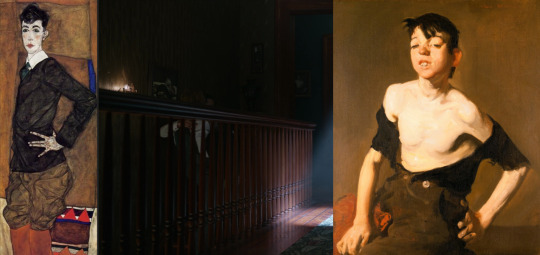
Portrait of Erich Lederer
Egon Schiele, 1912
The Schiele depicts a young Erich Lederer, son of art collectors Serena and August Lederer, whose collection was looted by the Gestapo. [Identified by @nicodelenfent.]
Paddy Flannigan
George Bellows, 1908
The Bellows depicts a young impoverished boy on the streets of New York. [Identified by @nicodelenfent.]


A Doll's House
Henrik Ibsen, 1879
Lestat tells Louis "They'll seat us late, and we'll miss Nora's entrance with the Christmas tree," which quite a few fans soon identified as a reference to this play, in which a housewife becomes slowly disillusioned with marital life and eventually leaves her husband. This conclusion led to the play being banned in certain countries, such as Germany and Britain, and Ibsen was compelled to write an alternative ending, in which Nora's husband forced her to stay.
In the two stage productions pictured above, you can see Kelsey Brennan and Nate Burger on the left, and Assad Zaman and Anjana Vasan on the right.
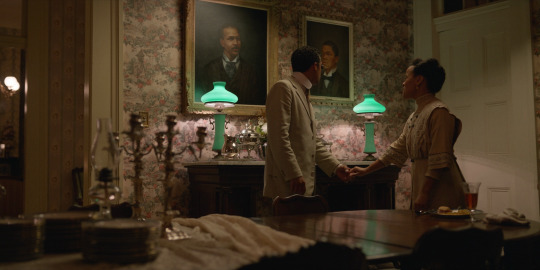
Unnamed paintings of Papa du Lac and Paul
Created for the show (uncredited artist).

Unidentified painting*
* The running theory is that the woman in this painting is Gabrielle, Lestat's mother; which would mean this is another uncredited prop painted for the show.

Woman in A Fur Coat
Edouard Manet, 1879
Additionally, on the bottom left corner of the frame you can catch a glimpse of another unidentified painting, but we couldn't get any clearer looks of it either.

Autumn at Arkville
Alexander H. Wyant, 1909
The one in the mirror and the one on the other side of the door are too blurry, but we managed to place the one on top of the couch! [Identified by @vfevermillion.]
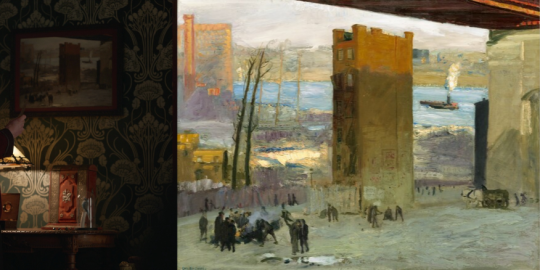
The Lone Tenement
George Bellows, 1909
The National Gallery of Art says about this painting: "Bellows has imbued the composition with a sense of eerie wistfulness, recording the precarious positions of those who were being displaced to make way for the future." [Identified by @nicodelenfent.]
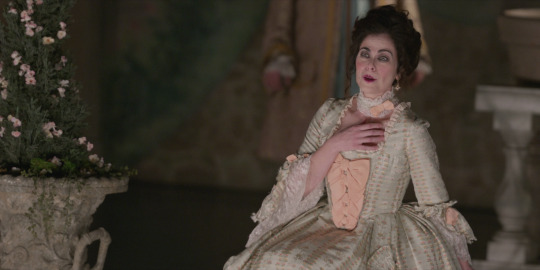
Don Pascuale
Gaetano Donizetti, 1842
The opera that Louis and Lestat go to at the end of the episode follows an elderly bachelor, who gets conned by his nephew Ernesto and his friend Malatesta into marrying the nephew's lover, Norina, under false pretenses. You can find a complete synopsis here.
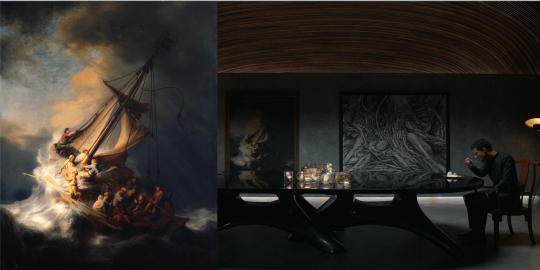
The Storm On The Sea Of Galilee
Rembrandt van Rijn, 1633
Rembrant van Rijn, Dutch Baroque painter and printmaker from the 17th century, is best known for his biblical and allegorical pieces. Rembrandt's only seascape was stolen from the Isabella Stewart Gardner Museum in Boston on March 18th, 1990, alongside other 12 works of art. The case remains unsolved. [Identified by Gizmodo's Linda Codega.]
If you spot or put a name to any other references, let us know if you'd like us to add them with credit to the post!
This week, we will be rewatching and discussing Episode 3, Is My Very Nature That of a Devil. We can't wait to hear your thoughts!
And, if you're just getting caught up, learn all about our group rewatch here ►
#louis de pointe du lac#daniel molloy#lestat de lioncourt#vampterview#interview with the vampire#iwtv#amc interview with the vampire#interview with the vampire amc#amc iwtv#iwtv amc#IWTVfanevents#rewind the tape#after the phantoms of your former self#analysis and meta#art of the episode
70 notes
·
View notes
Text




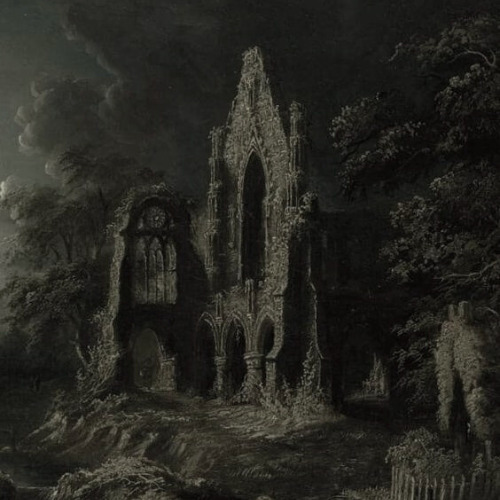





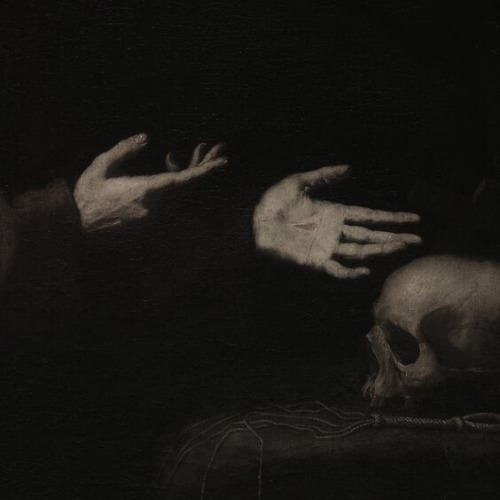
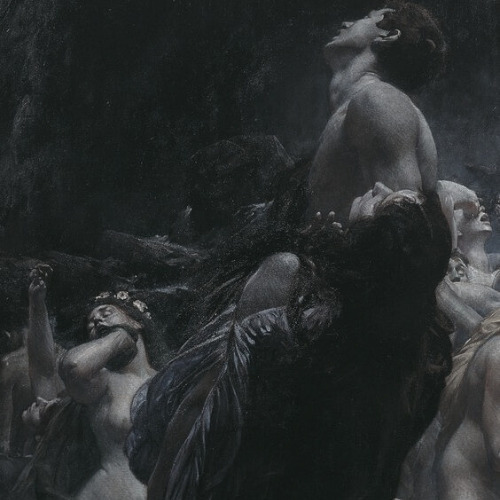
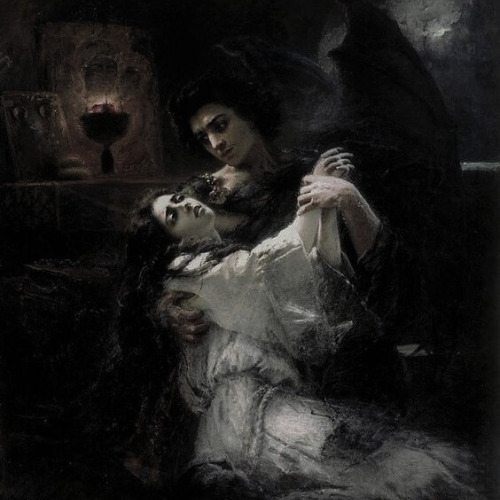


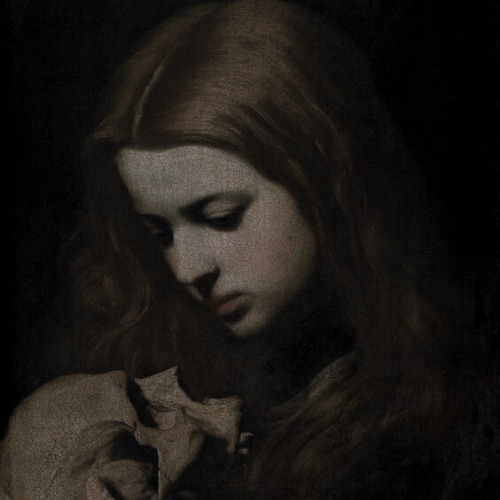


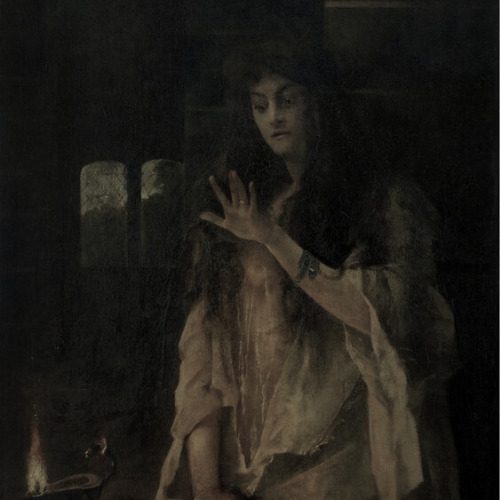
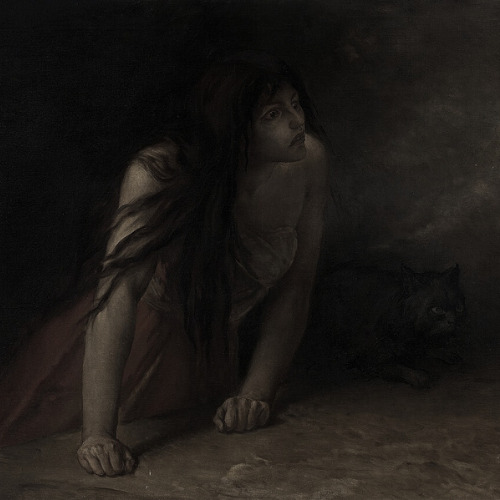


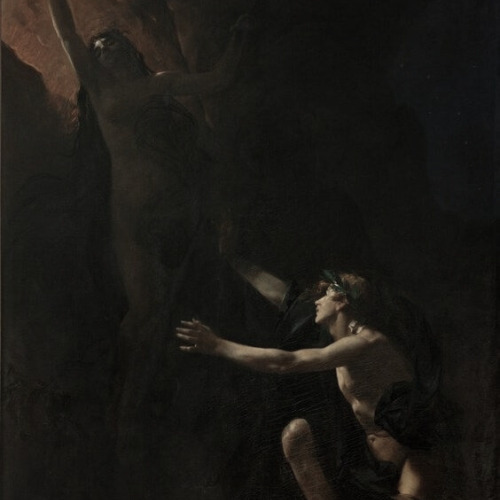


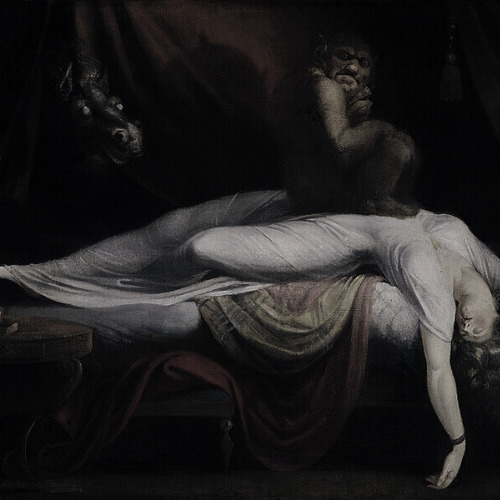

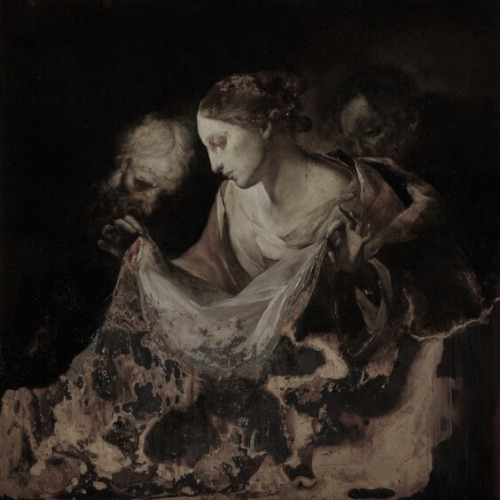

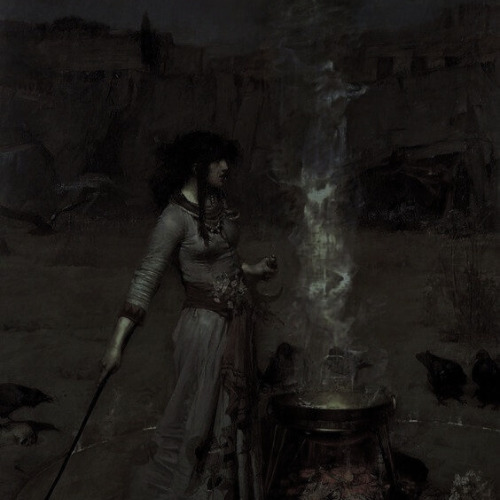
art aesthetics: gothic
#artist is carl gustav carus#artist is george roux#artist is carl gustav carus-#artist is ferdinand keller#artist is sebastian pether#artist is adolph von menzel#artist is daniel sayre groesbeck#artist is carlo dolci#artist is jose benlliure y gil#artist is pierre jean van der ouderaa#artist is jusepe de ribera#artist is adolf hiremy-hirschl#artist is jonstantin makovsky#artist is francesco cairo#artist is serafino macchiati#artist is jusepe de ribera-#artist is sir william nicholson#artist is henru fuseli#artist is alfred stevens#artist is jean-francois portaels#artist is cecco bravo#artist is piotr stachiewicz#artist is alexandre serres#artist is francesco del cairo-#artist is henri leopold levy#artist is henry fuseli-#artist is tintoretto#artist is nicola samori#artist is ferdinand knab#artist is john williams waterhouse
684 notes
·
View notes
Text

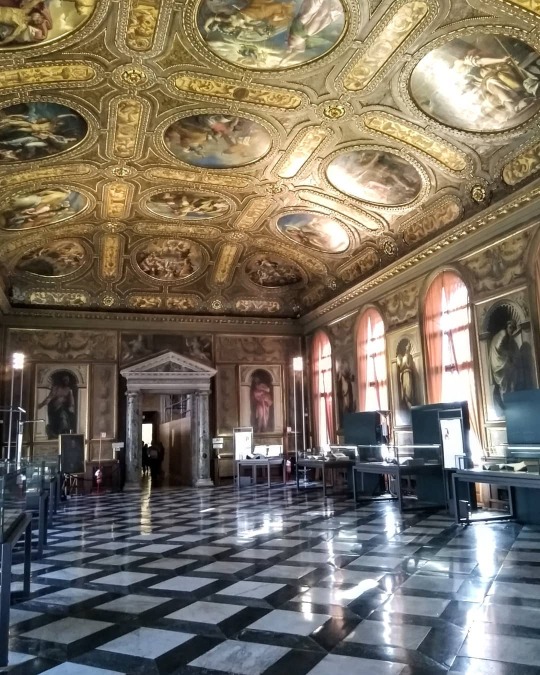

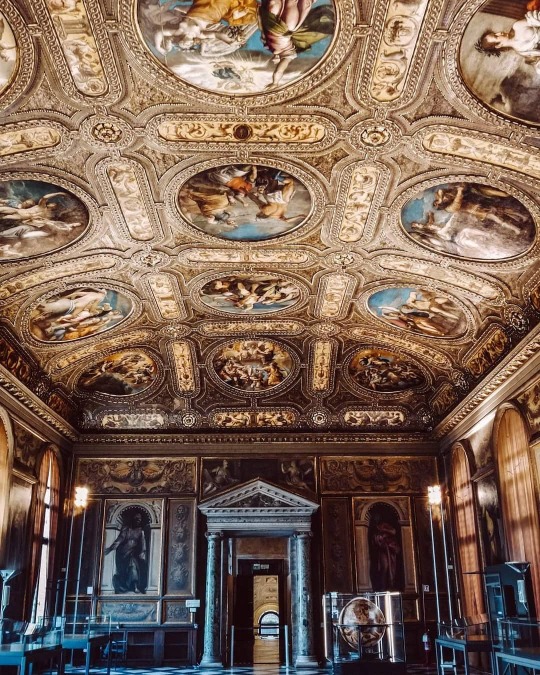
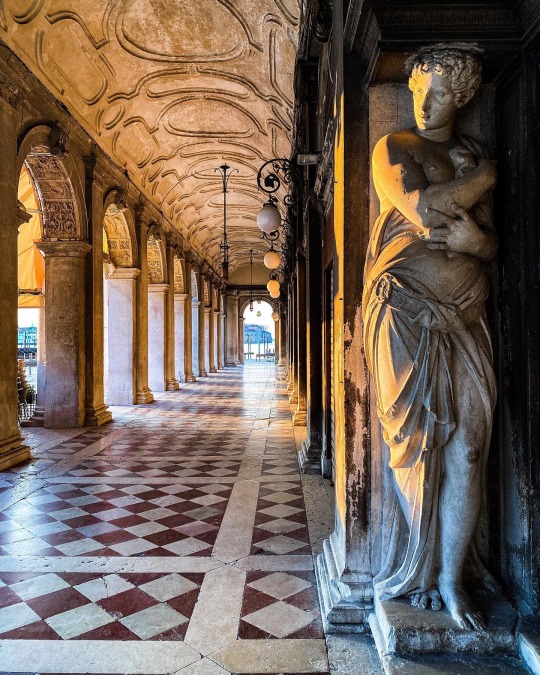
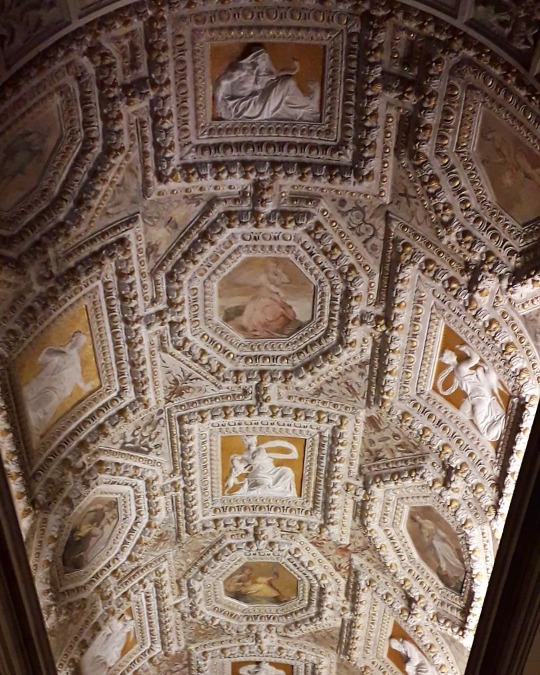
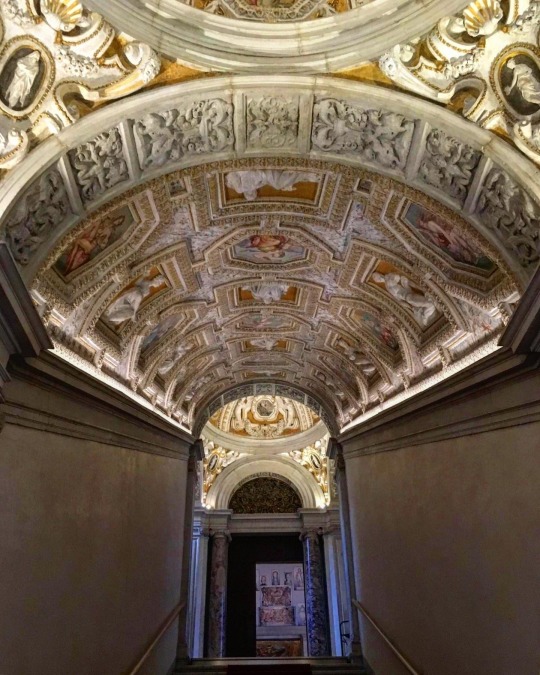
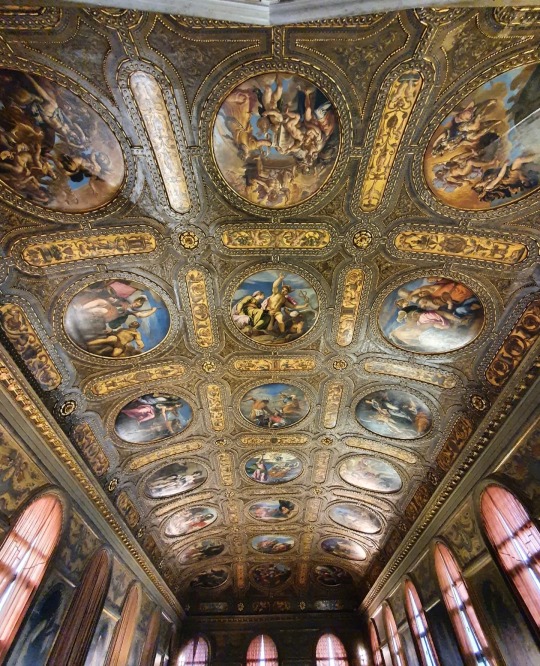

The Biblioteca Nazionale Marciana is located in Piazza San Marco, Venice. Its construction was due to the need to house the private collection of manuscripts, codices and incunabula, donated to the city of Venice by Cardinal Basilio Bessarión in 1468. Its construction began around 1537 under the design of Jacopo Sansovino and was completed by Vincenzo Scamozzi in 1588.
Currently its funds house more than 1million. of printed books, approx. 13,000 manuscripts, 2,883 incunabula and some 24,000 books published between 1500 and 1600. It also houses the unique scores of the operas by Francesco Cavalli (1602-1676), the most important composer of the s. XVII, Italian organist and singer.
Important artists such as Titian, Veronese, Alessandro Vittoria, Tintoretto, etc. also participated in the decoration of the library.
326 notes
·
View notes
Text
So, how old are the grandpas of the apocalypse really? Ft.
- Jonah Magnus
- Simon Fairchild
- Peter Lukas
- Maxwell Rayner
I MADE A PART 2 OF MY CHARACTER AGES RESEARCH
(part 1 incl. og archives crew, 3 avatars + gerry here)
after a few days of really wanting to detective the ages of this lot, i finally caved and decided to dig out the magnifying glass!
same disclaimers apply! including an extra disclaimer to say that I've changed the formatting for this a lil because there was a Lot More Research done compared to part 1. Necessitated bc these mfs are OLD. (except for peter lukas. peter lukas is surprisingly young??)
(All ages are as of S1 / 2016 & the highlights are in bold if you don't feel like reading my essays)
Jonah Magnus
Age: ~216
Birth Year: ~1800
There are a few landmarks we can use, but because of how shady most are (old-ass letters) I also can’t pin down any solid dates because all the characters involved are fictional ._.
Basically the only clues I got were: The Magnus Institute was established in 1818, but Jonah was old enough to travel alone to Germany and exchange letters with a friend (Albrecht von Closen) by 1816. So birthdate around ~1800? 1790?
I tried to find an ‘upper limit’ by using the life expectancy of the time since he also was able to live a ‘natural’ life until the (failed) Watcher’s Crown was carried out ‘at some point closely after February 13th, 1867’, BUT the average life expectancy of men was at most 41 years. So there was some Fairchild-esque shit going on there.
Simon Fairchild
Age: 439 - 488
Birth Year: 1528 - 1577
SPEAKING OF FAIRCHILD - sky grandpa! love him, he’s such a bastard.
Anyway, in his own words, he’s had ‘an absurdly long life’. In MAG151 he says he was apprenticed to the Italian artist Tintoretto. Apprenticeships in the Renaissance started at approximately 11-14 years old & lasted for 1-8 years, and I’m assuming this was the same for the 1500s. Hopefully.
Given that Tintoretto became a renowned artist in ~1542, my estimate of the oldest Simon could be would be 14 in 1542. On the other end of the scale, Wikipedia says that his last notable work was Il Paradiso, finished from 1588–1594. I can’t find any mention of works post-1588 so this puts the absolute youngest Simon could be at 11 years old in 1588. From those two estimates, it was just a matter of mathing it out :)
Note 1: Simon mentions that his Becoming was while painting a church, likely a ceiling or high wall since he ‘should have broken his neck’, which should narrow it down – except it doesn’t, because Tintoretto painted a lot of churches x_x
Note 2: I’ve just spent half an hour researching an Italian painter & art conventions in the 16th Century, which is of no relevance at all to my STEM degree in the 21st century. Simon’s age doesn’t even particularly matter because it was so long ago that the centuries quite literally blur together. This rabbit hole is incredibly fascinating, but this feels so ironically pointless, which is really, really fitting.
Note 3: Simon definitely deserved to get ripped apart by the mob. His time has long, long passed lmao
Peter Lukas
Age: ~49-61 (at the very youngest; 36)
Birth Year: late 1950s - late 1960s
Peter appears to be the youngest of these four – surprisingly so! – which makes it a lot simpler to pin down his age. He first meets JamesWright!Jonah between 1973 and 1996 & also he was old enough to have the option of watching TV when he was a child. TV became common in UK homes in the 1960s, so his birthdate at the earliest may be in the late 1950s/1960s.
However, he’s known Jonah as ‘Elias’ for most of their acquaintance by late 2018, meaning that they met at the earliest 1975 (21 years before 1996), but was probably more like 1980ish or later. I don’t think he would have met him too long after becoming an avatar some time after he became ‘old enough to run away’, which I’m assuming means he became aware of the Lonely when teenager-ish.
But spending some time on the Tundra before meeting other avatars makes sense for the Lonely, and so my vague estimate of his birth year would be late 1950s - late 1960s. I don’t think that his birthdate was anywhere later, though it is possible that it could have been as late as 1980 (if he began running away when very young & was introduced to ‘James Wright’ very early into avatar-hood), if incredibly unlikely.
Note: My ‘very youngest’ estimate for Peter Lukas is… younger than my estimate for Mike Crew’s age. I find this inordinately funny.
Maxwell Rayner
Age: 357
Birth Date: 8 November 1658
I have excellent news for Rayner! Good ol’ Jonny has made his original body Edmond Halley. A very famous person with a wikipedia page of his own that conveniently states his date of birth :)
Thanks, Jonny.
Rayner died in February 2017 at the age of 358 years 3 months 2 days, though he did spend a decent amount of time host-less. Unlike Gerard Keay, I’m unsure of how ‘alive’ he was during this time, so I’m just going to count it as ‘alive’-time because it means I get precise numbers for the first time since I started researching character ages!
#tma spoilers#tma#the magnus archives#jonah magnus#elias bouchard#james wright#character ages#simon fairchild#maxwell rayner#edmond halley#peter lukas#tma research#tma headcanons
61 notes
·
View notes
Text
The "Gethsemane" paintings: what they are and who created them
It's widely regarded as one of the most artistically effective -- and emotionally affecting -- sequences in the 1973 film of Jesus Christ Superstar. Nearly every reviewer has cited it (one calling it nothing less than a "masterly cinematic stroke of genius"), Wikipedia devotes the caption of an illustration to it, and I've seen more than one production (and one 50th-anniversary music video featuring the film's star, Ted Neeley) imitate it. (In fairness, it's not like anyone has come up with a better idea.)
Every draft of the screenplay uses the same language to describe it, and since I couldn't phrase it nearly so well, I will, too:
258 to 280. CRUCIFIXION MONTAGE.
On the heavy brass instrumental bridge, we cut to a rapid montage of about 23 shock cuts of full figure and details from the most powerful masterpieces, painted and sculpted, on the theme of The Crucifixion. Cut for impact of expression, nailed hand, wounds, thorns; for these 26 seconds we see how Christ was to die - both then and ever since. This is the agony of the cross.
It certainly is... especially those uncomfortably fast zooms and abrupt close-ups.
Some call it "foreshadowing," but I don't think that's a strong enough word. Truthfully, I find this series of famous paintings more brutal than the actual crucifixion scene in the movie. Compared to the visions Christ might be having about his death, the execution itself is in, out, and done so quickly that it's hard for me to feel any kind of way about it. But this sequence is a horse of a different color.
Anyway, one of the most asked questions about this montage has been, "What paintings were featured in this sequence, and who painted them?" In all honesty, I never cared who did it. I assumed they came from the Italian and Northern Renaissance eras, possibly with some Baroque mixed in. But I was never an art history major, and knowing the sources and their creators wouldn't have enriched my experience. I know it nailed me in the gut when I was a kid and has (somewhat) freaked me out ever since, and I thought that was all I needed to know.
However, it mattered to other people, so I did some digging. It was kind of tough, partly because many of the shots zeroed in on specific details rather than revealing the entire painting. But with a little help from the film's production file (courtesy of the Norman Jewison collection at the Wisconsin Historical Society Archives), and researchers Ethan Clark and José Garay, we've managed to identify 12 paintings by 10 artists in the final montage, as well as uncovering a few of them that didn't make the cut.
To learn about the paintings and take a closer look, hit the jump!
The Montage
Here, in order of appearance, are the paintings that made the cut, as well as the artists behind them, and how many times they show up:
Crucifixion of Christ (Derick Baegert) -- once
Isenheim Altarpiece (Matthias Grünewald) -- six times (thrice sequentially after Baegert, twice sequentially after the second Grünewald, and once after Bosch)
Crucifixion (Tintoretto) -- once (and incidentally, it's horizontally inverted)
The Crucifixion of Christ (Matthias Grünewald) -- twice (once after Tintoretto, once after the Austrian School)
Christ on the Cross (Diego Velázquez) -- once
Crucifixion (Masaccio) -- once
Crucifixion (Andrea del Castagno) -- once
The Trinity with Christ Crucified (Austrian School) -- once (the angel on the right-hand side, horizontally inverted)
Saint Luke Painting the Crucifixion (Francisco de Zurbarán) -- twice (once before Bosch, once before van der Weyden)
Christ Carrying the Cross (a follower of Hieronymus Bosch) -- twice (sequentially)
The Crucified Christ Between the Mourning Mary and St. John, a/k/a Crucifixion of Scheut or Escorial Crucifixion (Rogier van der Weyden) -- twice (sequentially)
Christ Crucified (Francisco Goya) -- thrice (sequentially)
Of the above list, ten of them were included in a memo dated June 8, 1973, concerning the contents of the montage that appears in the production file. (Grünewald's name appears only once, with no attribution, so it's unclear whether one or both paintings were initially intended for inclusion.)
The Leftovers
Only three classic paintings from the previously mentioned memo didn't make it into the film.
First on the list, which categorized the paintings alphabetically by artist's surname (or, in some cases, name), is "Antonello." This clearly refers to the crucifixion painted by Antonello da Messina, which incidentally was also source material for the production designs for Martin Scorsese's The Last Temptation of Christ. The only unclear thing is which one; Wikipedia lists three, all fairly similar-looking.
Second is an actual Hieronymus Bosch painting, Ecce Homo. Considering the Bosch-reminiscent image used in the final cut, I can only assume Jewison was either eying the crowd or confusing this painting with the more well-known descendant.
Last is an artist we have yet to identify. The memo lists them as "Guinewala," but Googling produces no artist by that name, and there is no helpful title to allow us to reverse-engineer who that actually is. (My assumption is that it's a phonetic spelling or a weird typo.) A friend who spends a lot of time at MOMA and the Brooklyn Museum of Art is wracking their brain. When they have an answer, we will!
Well... I'm glad I cleared that up for everyone. I hope this offers the art experts among us some insight into the construction of the scene. Maybe this will tell them something that we average folk don't know? Time will tell.
#jesus christ superstar#andrew lloyd webber#tim rice#jcs#jesus christ super star#jcss#jesus christ super-star#carl anderson#ted neeley#miscellaneous
20 notes
·
View notes
Text
THIS DAY IN GAY HISTORY
based on: The White Crane Institute's 'Gay Wisdom', Gay Birthdays, Gay For Today, Famous GLBT, glbt-Gay Encylopedia, Today in Gay History, Wikipedia, and more … January 20



c.275 AD. – St. Sebastian was born in the 3rd century AD. We know the date, but not the year. He is the patron saint of archers because he was bound to a stake and shot with arrows. He is also the patron saint of soldiers. As a beautiful young man he was the favorite of the emperor Diocletian who turned against him for embracing Christianity.
Some tales speculate that the Emperor Diocletian made romantic advances upon Sebastian and was enraged when Sebastian rejected him on Christian grounds. Other stories actually refer to Sebastian as the emperor's lover. Whether or not such accounts are legitimate, the image of St. Sebastian has been linked to homoeroticism.
According to the Church's official Acta Sanctorum, Sebastian, serving under the emperors Diocletian and Maximian, came to the rescue of Christian soldiers, Marcellinus and Mark, and thereby confessed his own Christianity. Diocletian insisted that Sebastian be shot to death by his fellow archers; these orders were followed, and Sebastian was left for dead.
These details—based on accounts written centuries after Sebastian's death and therefore largely apocryphal—may have helped form Sebastian's subsequent reputation as a homosexual martyr since his story constitutes a kind of "coming out" tale followed by his survival of an execution that may be read symbolically as a penetration.
In the Renaissance, Sebastian emerged as an extraordinarily popular subject for painters, perhaps rivaled only by Jesus and Mary; he was especially prized by artists who saw in the young saint a figure of Hellenic loveliness. Numerous painters—Tintoretto, Mantegna, Titian, Guido Reni, Giorgione, Perugino, Botticelli, Bazzi ("Il Sodoma")—recast Sebastian as a martyr beatifically receptive to his arrow-ridden fate.
It was primarily the Renaissance depiction of Sebastian that served a later, explicitly homosexual cult of St. Sebastian that took hold with remarkable force beginning in the nineteenth century, with Sebastian as an modern emblem of both a homoerotically charged object of desire and a source of solace for the rejected homosexual.

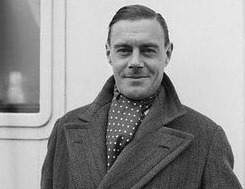
1900 – British actor Colin Clive (d.1937) is born in Saint-Malo, France to an English colonel, Colin Philip Greig, and his wife, Caroline Margaret Lugard Clive. He attended Stonyhurst College and subsequently Royal Military Academy Sandhurst, where an injured knee disqualified him from military service and contributed to his becoming a stage actor. Clive studied acting, and replaced Laurence Olivier in the stage play, Journey’s End, in 1927.
James Whale was the director of Journey's End. The two struck up an intimate relationship, and Clive played the lead in Journey’s End when it moved to the Savoy Theater in London in 1928. Clive was embraced by Whale’s theatrical friends including actress Elsa Lanchester. He followed Whale to New York City and Whale facilitated the casting of Clive in the movie version of the play.
Journey’s End was Clive’s first of 18 feature films. Clive appeared on Broadway in Overture. When the play closed, he went to London and starred with Elsa Lanchester in The Stronger Sex.
Clive is perhaps best known for playing the role of Dr. Henry Frankenstein in the James Whale-directed Frankenstein (1931) and in the Bride of Frankenstein (1935) with his friend Elsa Lanchester.
Though Clive was gay, he married actress Jeanne de Casalis in 1929, but the marriage was one of convenience, and they separated a short time later.
Clive was a member of the Brit ex-patriot actors in Hollywood including Lanchester, Karloff and Charles Laughton, and remained close with Whale.
The actor struggled with his sexual identity and suffered alcoholism and depression from an early age. His drinking became more and more problematic professionally. He often came to work drunk and passed out on the set. He was even fired from a starring role in a film when he suffered a breakdown.
Clive’s final film was in 1937, The Woman I Love. Colin Clive died on June 25, 1937, of tuberculosis complicated by chronic alcoholism. He was 37 years old. Actress Mae Clarke, one of his leading ladies, said, "Colin was the handsomest man I ever saw and also the saddest."

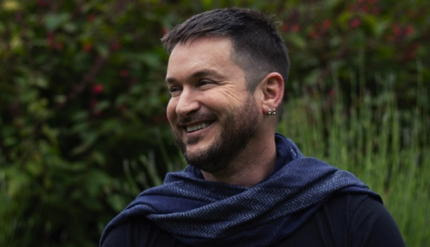
1971 – Darren Main is a yoga teacher and author currently living in San Francisco. He has written largely about Eastern spirituality for a more modern and Western audience. Main is best known for his second book, Yoga and the Path of the Urban Mystic. He has written several other books: Inner Tranquility: A Guide to Seated Meditation", "Spiritual Journeys Along the Yellow Brick Road"; a controversial book, "Hearts and Minds: Talking to Christians About Homosexuality" and "The Yogi Entrepreneur: a Guide to Earning a Mindful Living Through Yoga." Main's writing has been translated in various languages and several of his books have been released in numerous editions.
Main also maintains a podcast called "Inquire Within" in which he interviews various individuals on topics such as healing, spiritualism, and social activism.Main was born in Westerly, RI. He is the single father to an adopted son.
Main's adolescent years were "filled with pain, rage and confusion" which led to drug abuse and depression. After a suicide attempt, Main claimed to have had a spiritual awakening. This spiritual awakening led Main to Alcoholics Anonymous and to Narcotics Anonymous and to Hatha Yoga and Meditation. Main also became a student of A Course in Miracles.
Main studied Social Work at Mohegan community College, Community College of Rhode Island and at Rhode Island College. He also studied massage therapy at the Bancroft School of Massage Therapy in Worcester, MA and trained to become a yoga and meditation instructor at The Kripalu Center in Lenox, MA.
Main began teaching yoga in Providence, RI in 1992. He spent a year teaching in Bozeman, MT in 1993. Main moved to San Francisco, CA in 1994 where he currently teaches. In 1998, Main opened a San Francisco yoga studio, Castro Yoga with David Nelson. In 2000, Castro Yoga closed and Main began teaching for San Francisco’s largest yoga studio,Yoga Tree. In addition to his weekly yoga classes and various workshops, Main is also the Director of Yoga Tree's Teacher Training program. His books have become required text in a number of yoga teacher certification programs throughout the United States.
Shortly after his first book was released in 1999, Main began teaching throughout the United States and internationally.
Main teaches one of the largest weekly yoga classes in the world at San Francisco's iconic Grace Cathedral. This donation-based yoga class features renowned recording artists and musicians playing live music and attracts as many as 700 students per week. The class has been featured in local as well as national press and has been criticized by some conservative Christian groups.
In April 2006, Main founded a Naked Yoga for Men group in San Francisco and began teaching naked yoga (for men) at Mission Yoga.
Main also writes articles and has contributed to Gay.com, White Crain Journal and the Kaiser Permanente HIV Update Newsletter.


1974 – Michael Stabile is an American journalist and documentary filmmaker best known for his work in and about the pornography industry. His work has appeared in Playboy, The Daily Beast, Buzzfeed and Salon.com. In 2004, he and Jack Shamama co-created the gay pornographic soap opera Wet Palms for which they won a GayVN Award for Best Screenplay. He has also written several other GayVN-nominated movies including Spokes III, Cross Country, and Master of the House. Two of the films were included in "Top 10 Gay Porn Movies of the Decade" by Gawker Media's Fleshbot with credit given to the writing team of Stabile and Shamama.Since 2003, Stabile has edited Gay Porn Blog and in 2005 became producer of The Tim and Roma Show, a web-based talk show about the gay adult industry. In 2008, Stabile launched gay news site TheSword.com. He has been named "an arbiter of taste for gay porn" by the Village Voice.
Stabile has also been featured in the San Francisco Bay Guardian, the San Francisco Chronicle, Gay.com, Time Out, Cybersocket, and the Huffington Post.Stabile is working with Shamama and cinematographer Ben Leon on Seed Money, a documentary about Falcon Studios' founder and GLBT philanthropist Chuck Holmes, currently in production. Their documentary short, Smut Capital of America premiered at the 2011 Tribeca Film Festival on April 24, 2011. In late 2011, Stabile began working with Warhol Superstar Holly Woodlawn on a documentary about her life.


1979 – Will Young is an English singer and actor. He catapulted to fame in 2002 after winning the inaugural UK Pop Idol contest. He has continued to work in music, and also as an actor.
Contrary to popular belief, Will did not come from behind to win the contest. After having beaten the widely-accepted frontrunner Gareth Gates in the final show, it emerged that he had in fact gained the most votes in six out of the nine weeks of the live show.
Young's first single was a double A-side featuring Evergreen and Anything Is Possible. In March 2002 this became the fastest-selling debut in UK chart history, selling 403,027 copies on its day of release (1,108,659 copies in its first week). It went on to sell over 1.7 million copies, and in the official list of the all-time best-selling singles in the UK issued later that year it was 11th. On 31 December 2009, Radio 1 confirmed that Anything Is Possible/Evergreen was the biggest selling single of the 2000s decade in the United Kingdom.
Young subsequently revealed that he was gay, in order to pre-empt a tabloid newspaper that was preparing to run a story 'outing' him. He also stated that he had never hidden, and was comfortable with, his sexuality.
Later in the year, Young met comedian David Walliams and the pair became good friends, with Young appearing at the Little Britain live stage show in Manchester, and later recording a podcast with Walliams, in which they chatted about various aspects of Young's career.
Will added acting to his repertoire when he accepted a role in the BBC film Mrs Henderson Presents, starring Judi Dench and Bob Hoskins. The film was released in the UK in November 2005 to excellent reviews — not least for Young's performance as both actor and singer in the film.


1980 – Yusaf Mack is an American professional boxer. He has held regional titles from the USBA (Now the IBF), NABA, UBA, and NABF. Mack has fought several former world champions, including Alejandro Berrio, Glen Johnson and Carl Froch.
Mack made his professional boxing debut at middleweight on November 17, 2000 in Biloxi, Mississippi. In his first 24 fights, Mack compiled a record of 22-0 with two draws. Throughout his early fights Mack moved between the middleweight, super middleweight, and light heavyweight divisions.
Mack is a father of ten children and was engaged to a woman. In 2015, he appeared in a Dawgpoundusa.com production titled Holiday Hump'n along with gay pornographic actors Bamm Bamm and Young Buck under the name Philly. He initially claimed he had been drugged by the film's producers and had no recollection of making the film, but later told WTXF-TV that he was gay and had lied to cover that up.
Yusaf later had a "coming out party" at Rage nightclub in Weho, a longtime landmark on the L.A. gay scene.

Today's Gay Wisdom
For The Straight Folks Who Don't Mind Gays But Wish They Weren't So BLATANT
by Pat Parker
You know, some people got a lot of nerve.
Sometimes I don't believe the things I see and hear.
Have you met the woman who's shocked by two women kissing
and in the same breath, tells you she is pregnant?
BUT gays, shouldn't be so blatant.
Or this straight couple sits next to you in a movie and
you can't hear the dialogue because of the sound effects.
BUT gays shouldn't be so blatant.
And the woman in your office spends an entire lunch hour
talking about her new bikini drawers and how much
her husband likes them.
BUT gays shouldn't be so blatant.
Or the "hip" chick in your class rattling like a mile a minute
while you're trying to get stoned in the john, about the
camping trip she took with her musician boyfriend.
BUT gays shouldn't be so blatant.
You go in a public bathroom and all over the walls there's John loves
Mary, Janice digs Richard, Pepe loves Delores, etc., etc.
BUT gays shouldn't be so blatant.
Or your go to an amusement park and there's a tunnel of love
and pictures of straights painted on the front and grinning
couples are coming in and out.
BUT gays shouldn't be so blatant.
Fact is, blatant heterosexuals are all over the place.
Supermarkets, movies, on your job, in church, in books, on television every day
day and night, every place - even in gay bars and they want gay
men and woman to go and hide in the closet.
So to you straight folks I say, "Sure, I'll go if you go too"
BUT I'm polite, so, after you.


9 notes
·
View notes
Text
At the heart of Philip's great collection, therefore, were the works of Titian, Coxcie and Bosch, representatives of different parts of his monarchy - and representatives, too, it might well be thought, if different parts of Philip's own psyche. In addition, Philip collected as many paintings as he could by leading Italian contemporary masters; Veronese's The Annunciation and Tintoretto's Nativity were some compensation for the artists' refusal to come to Spain to work for him.
Patrick Williams, Philip II
4 notes
·
View notes
Text

▸ @archeyeved ⟶ ❛ how did you do it ? how did you rid yourself of any humanity , how are you able to do .. to do what you do to them ? ❜
Simon was quiet for a time, resting his elbows on the balcony railing. It was interesting, and not unpleasant, to see Jon outside the Archives for once. It made Simon feel a little special, being visited by the Archivist like this. While he had massive stakes in the Institute and provided most of its funding, he had better things to do than spend every day in that building, so it was unlikely that they would have gotten to speak at all if Jon hadn’t sought him out.
And he approached with a question Simon had never considered before, not accusatory, but seeking advice, and Simon had to think on it carefully for what may have been the first time in his life—which was telling enough in itself.
He had to think all the way back to his tenure with Tintoretto and found that he never maintained much consideration for others. He had a few people he enjoyed talking to back in those days, other artists, some of the models, so on and so forth, but there was nobody who stood out as someone he could not stand to go without. He was too concerned with making a name for himself in those days, not even for his family, just as a point of his own pride, to pay much attention to what he deemed other people’s more trivial affairs. It left him with few ties to the ‘real world,’ a blessing and a curse at once. Had he died falling off that ladder, he would have left no impression on anybody—the curse. But because he didn’t die and instead became what he was now, he took to it remarkably quickly—the blessing.
He could not recall a single time when he had struggled with what he was. He was embittered and enraged in the immediate aftermath, and he murdered some of his old colleagues without thinking twice about it, and the rage melted into consummate glee. That was the end of it.
Simon glanced at Jon from the corner of his eye and finally answered: “I don’t think I ever had much humanity to lose.” Whatever he’d possessed had been so trifling that the Vast flooded into him and diluted it to a point of nihility, like pouring five gallons of water over a shot of whiskey.
He pushed himself away from the balcony, rose to his full height, and bestowed Jon with a warm smile, his characteristic vivacity steadily oozing back into him. “Not the answer you were wanting, I’m sure,” he said, looking like he was smothering a laugh just behind his curled lips. “But it is the truth: I have never once possessed an excess of goodness and decency.”
Having a natural affinity for it would not help Jon much, but there was one other thing Simon could mention, some actual advice that the Archivist might—probably wouldn’t, but might—take to heart. The Awful Deep had instilled in Simon that he was not special to the Vast in any way—of course not; it would have been ridiculous to think so, yet he had deluded himself into thinking so. “It helps to remember, too, that it’s me or them. The Vast—or in your case, the Eye—will feed, no matter what you do. And if you try to starve it, it will resort to cannibalism in a fit of desperation.” He strode forward and laid a finger on Jon’s chest. “That means you. You or them,” he reiterated. “And when you’re being cannibalized, when those teeth are in your skin, all you want is for it to happen to somebody else. I know you think me horrifically selfish for that, but it’s hard to hang onto your nobility and morality in that situation, and I would rather it be them than me.”
Simon had never told anyone this much about the Awful Deep and how it affected him since he was first talking about it to Jonah, and he looked up at the sky thoughtfully for a moment and then burst into laughter. “My, my!—you are good at that! You Seeing little scoundrels!” He sashayed toward the door leading back inside and, laying a hand on it, turned back to Jon. “Can I interest you in a martini? I’m parched.”
#you and i‚ we're flying high. 『 ic 』#lately‚ i'm feeling like a big bang. 『 answered 』#archeyeved#//BEEN OBSESSED WITH THIS ASK TBH... SO EXCITED TO FINALLY BE ANSWERING IT#//jon: how do you do it? :(#//simon: i was trapped at the bottom of the ocean for many months and i would like to not do it again#//jon: wh-#//simon: anyway! martini time! :)
6 notes
·
View notes